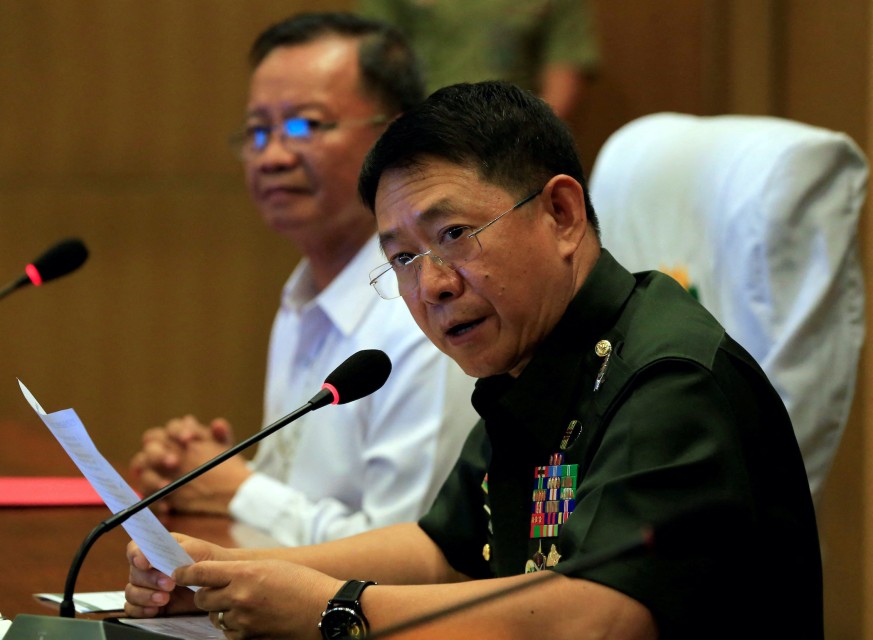
MANILA (Reuters) – The Philippines hopes to procure mid-range capability missiles in future and wants to utilise a U.S.-deployed Typhon system for its military training, with no immediate plan for it to be returned, a top security official said on Friday.
Confirming an earlier report by Reuters, Philippine National Security Adviser Eduardo Ano said there was no set timeline for the withdrawal of the United States’ mid-range missile system from the country, which China has demanded to be pulled out citing risks of a geopolitical confrontation.
Reuters reported on Thursday the United States was testing the feasibility of the missile system’s use in a regional conflict and has no immediate plans to take it back.
It was sent to the northern Philippines in April as part of the two defence allies’ joint military drills, in what was its first deployment in the Indo-Pacific region, though no missiles were launched during the exercises.
“We don’t have a timeline,” Ano told reporters when asked how long the Typhon system would remain in the Philippines, noting that a panel comprised of officials of both countries would decide its future. “No plans to pull it out yet.”
“There will be consultation, but for now we need the … Typhon missile launcher for our training and upgrading the capabilities of our armed forces,” Ano added.
The deployment of Typhon, which can be equipped with cruise missiles capable of striking Chinese targets, comes at a time of escalating tensions between Beijing and Manila over contested areas of the South China Sea.
Recent months have brought a series of sea and air confrontations in the strategic waterway, the majority of which is claimed by China as its territory.
A satellite image taken on Wednesday by Planet Labs, a commercial satellite firm, and reviewed by Reuters showed the Typhon at the Laoag International Airport in Ilocos Norte province, which faces the South China Sea and is near the Taiwan Strait.
“We also need to know how to operate this because, in the future, these are the types of equipment we would want to procure,” Ano said.
China’s foreign ministry said on Thursday it was very concerned about the plan to keep the system in place.
“Nobody can dictate to us on what to do,” Ano said of China, while underlining the Philippine commitment to its alliance with the United States.
“We know what is best for our country, so they cannot dictate anything (to) us, particularly on the deployment of this missile launcher.”
(Reporting by Karen Lema; Editing by Martin Petty)








